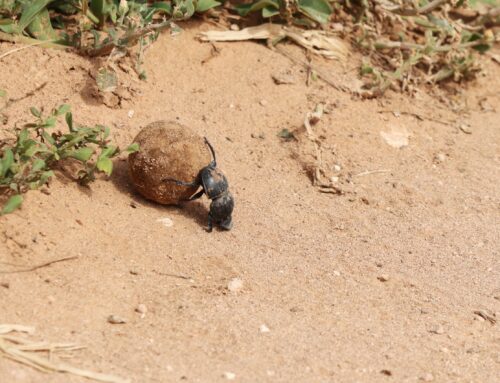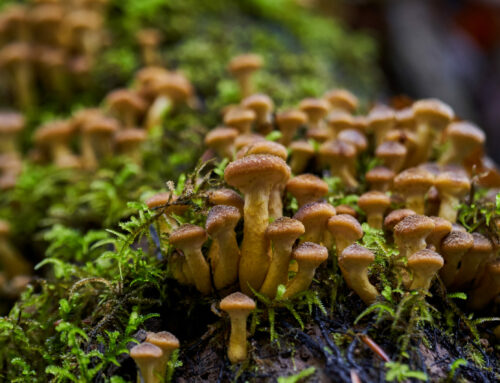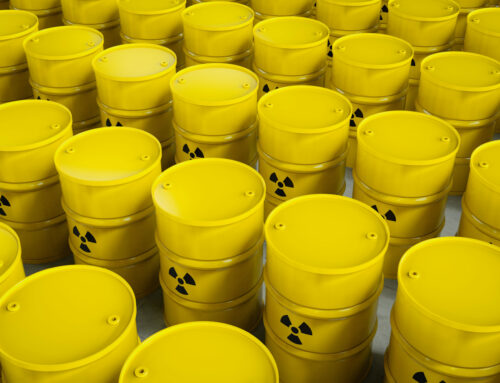“When the last tree has been cut down, the last fish caught, the last river poisoned, only then will we realize that one cannot eat money.”
– Cree Indian prophecy
Our today´s topic is less covered in media than the human gut microbiome, however, it is of tremendous global importance.
It is about decline of our insect pollinators.
How serious is this really?
How does it affect us and the rest of the biosphere?
What do we actually know about the insect pollinator´s microbiomes?
Finally, is there anything we can do to help them?
In the next few paragraphs, we´ll try to address some of these questions…
HOW SERIOUS IS THE SITUATION?
We probably all learned that if there are no bees, there will be no fruits. Indeed, insect pollinators are THE KEY for survival of the vast majority of wild- and agricultural plants on our planet. One reason is, if a plant pollinated by an insect doesn´t get pollinated, it won´t bear fruits and seeds. If this happens many times, that plant species will eventually become extinct. Another reason is that the pollinator insects are responsible for fertilization between different individuals of the same plant species, thus helping them to maintain genetic diversity. In general, if genetic diversity of a species decreases it becomes more vulnerable to environmental stress or diseases. Finally, if a number of pollinator-dependent plants become extinct, it means loss of home (habitat) for a number of other species, closing the vicious cycle. No need to mention that in all of the above scenarios, our food will disappear, too. About 80% of wild plants and 75% of our crops depend on pollinators 1.
There is growing number of reports and studies showing the global decline of insect pollinators. A recent review 2, suggests that the number of the bee species collected since 1980´s declined about 25% worldwide. For honey bees (which are the most studied bee species), estimates of declines between 1947-2005 are 59% in the USA, and 25% between 1985-2005 in Europe 1.
WHY IS THIS HAPPENING?
There is no single reason for decline of insect pollinators. Human activities leading to destruction of the natural insect´s habitats, such as increase in agriculture, seem to be the major driving force. Together with this, massive use of pesticides, herbicides, fertilizers, antibiotics and other toxic chemicals, as well as introduction of foreign insect species by trade and other human activities also play an important role 3.
Infections by pathogens and parasites are another reason. For example, due to the ectoparasitic mite Varroa destructor, an invasive species from Asia, most wild honey bee colonies in Europe and the USA have vanished, leaving only those kept by beekeepers 1.
There is still a mystery about unusually high loss of many bee colonies during the winter/spring of 2006-2007 in the USA, called Colony Collapse Disorder, or CCD 4. Besides the above listed factors, others such as climate change, bad nutrition, air pollution or even electromagnetic radiation have been mentioned 5.
Finally, as already pointed out, loss of species- or genetic diversity, makes any ecosystem or population more sensitive to the external stressors, including the insect pollinators.
WHAT DO WE KNOW ABOUT INSECT POLLINATOR´S MICROBIOME?
The gut microbiome of domesticated honey bees, is the best studied of all insect pollinators. It has relatively simpler composition in comparison to humans and other studied mammals, harboring only about eight to ten various types of bacteria (phylotypes). Good news is that in contrast to humans, all bacterial species from the honey bee gut microbiome examined so far, can be cultured. This means we should be able to get better insight into its structure-function relationship. Due to its relative simplicity, bee gut microbiome is also a nice model system to study evolution of the host-microbiome interactions 6,7.
Because of high sugar consumption, bee gut microbiomes have evolved special ability to provide various genes for digestion and conversion of sugars. Modulation of the immune system, regulation of the body weight, hormonal balance, metabolism of toxins and gut-brain effects, are some of the microbiome functions observed in humans and animals. Indeed, effects of the gut microbiota on weight gain, hormonal signaling and immune system stimulation have been recently shown in honey bees 8,9. Consequently, it is expectable that the disturbance of the bee microbiota negatively impacts their susceptibility to infections by pathogens, their social behavior, ability to degrade foreign substances and general fitness 6.
Besides bacteria, bee microbiomes contain viruses, fungi and protozoans. It is still not clear how exactly the diversity of bee microbiota contributes to the health and well-being of their hosts. More research is needed to learn if under certain conditions, some of the otherwise symbiotic or harmless members of the bee microbiota can become dangerous or even detrimental 10.
Bee microbiomes are also host specific and their diversity in wild- and solitary bees is much higher than in domesticated honey bees. Routes of exchange between solitary and social bees are very important field of study, as a potential approach for restauration of the damaged bee microbiomes 6,11.
HOW CAN WE USE MICROBIOME TO MITIGATE OR STOP THE POLLINATOR´S DECLINE?
Using the datasets from metagenomic and other studies, soon we will see more interventions in the insect pollinator´s microbiomes, as a way to support their health, general fitness, longevity and productivity.
For example, by analysis of the microbiota composition, we could limit the spread of the pathogens by monitoring their presence, or by microbiome modulations, we could improve degradation of environmental toxins by pollinators. On the other side, microbiome analysis can also provide us hints about nutritional needs of insect pollinators, for example, which types of flowers they need. This can help researchers to provide recommendations for selecting the best plants for conservation and restauration of the pollinator´s habitats 12.
Lactic acid bacteria (LAB), Bacillus strains and others, known for their beneficial (probiotic) effects in other organisms, are also commonly found in the bee gut. There are already couple of companies selling probiotic preparations specifically for honey bees, such as Strong Microbials (WI, USA) or Biowet (Poland). Recently, researchers successfully used prebiotics and probiotics to treat the intracellular honey bee parasite Nocema ceranae 7,13,14. A detailed catalogue of LAB and other bacteria with potentially probiotic effects on the microbiomes of insect pollinators, should help researchers to select appropriate preparations and strains, improving their heath and well-being.
1. Potts, S. G. et al. Global pollinator declines: trends, impacts and drivers. Trends Ecol. Evol. 25, 345–353 (2010).
2. Zattara, E. E. & Aizen, M. A. Worldwide occurrence records suggest a global decline in bee species richness. One Earth 4, 114–123 (2021).
3. Drivdal, L. & van der Sluijs, J. P. Pollinator conservation requires a stronger and broader application of the precautionary principle. Curr. Opin. Insect Sci. 46, 95–105 (2021).
4. Oldroyd, B. P. What’s Killing American Honey Bees? PLoS Biol. 5, e168 (2007).
5. Balmori, A. Electromagnetic radiation as an emerging driver factor for the decline of insects. Sci. Total Environ. 767, 144913 (2021).
6. Engel, P. et al. The Bee Microbiome: Impact on Bee Health and Model for Evolution and Ecology of Host-Microbe Interactions. mBio 7, (2016).
7. Nowak, A., Szczuka, D., Górczyńska, A., Motyl, I. & Kręgiel, D. Characterization of Apis mellifera Gastrointestinal Microbiota and Lactic Acid Bacteria for Honeybee Protection—A Review. Cells 10, 701 (2021).
8. Kwong, W. K., Mancenido, A. L. & Moran, N. A. Immune system stimulation by the native gut microbiota of honey bees. R. Soc. Open Sci. 4, 170003 (2017).
9. Zheng, H., Powell, J. E., Steele, M. I., Dietrich, C. & Moran, N. A. Honeybee gut microbiota promotes host weight gain via bacterial metabolism and hormonal signaling. Proc. Natl. Acad. Sci. 114, 4775–4780 (2017).
10. Moran, N. A. Genomics of the honey bee microbiome. Curr. Opin. Insect Sci. 10, 22–28 (2015).
11. Voulgari-Kokota, A., McFrederick, Q. S., Steffan-Dewenter, I. & Keller, A. Drivers, Diversity, and Functions of the Solitary-Bee Microbiota. Trends Microbiol. 27, 1034–1044 (2019).
12. Grozinger, C. M. & Zayed, A. Improving bee health through genomics. Nat. Rev. Genet. 21, 277–291 (2020).
13. El Khoury, S. et al. Deleterious Interaction Between Honeybees (Apis mellifera) and its Microsporidian Intracellular Parasite Nosema ceranae Was Mitigated by Administrating Either Endogenous or Allochthonous Gut Microbiota Strains. Front. Ecol. Evol. 6, 58 (2018).
14. Borges, D., Guzman-Novoa, E. & Goodwin, P. H. Effects of Prebiotics and Probiotics on Honey Bees (Apis mellifera) Infected with the Microsporidian Parasite Nosema ceranae. Microorganisms 9, 481 (2021).





